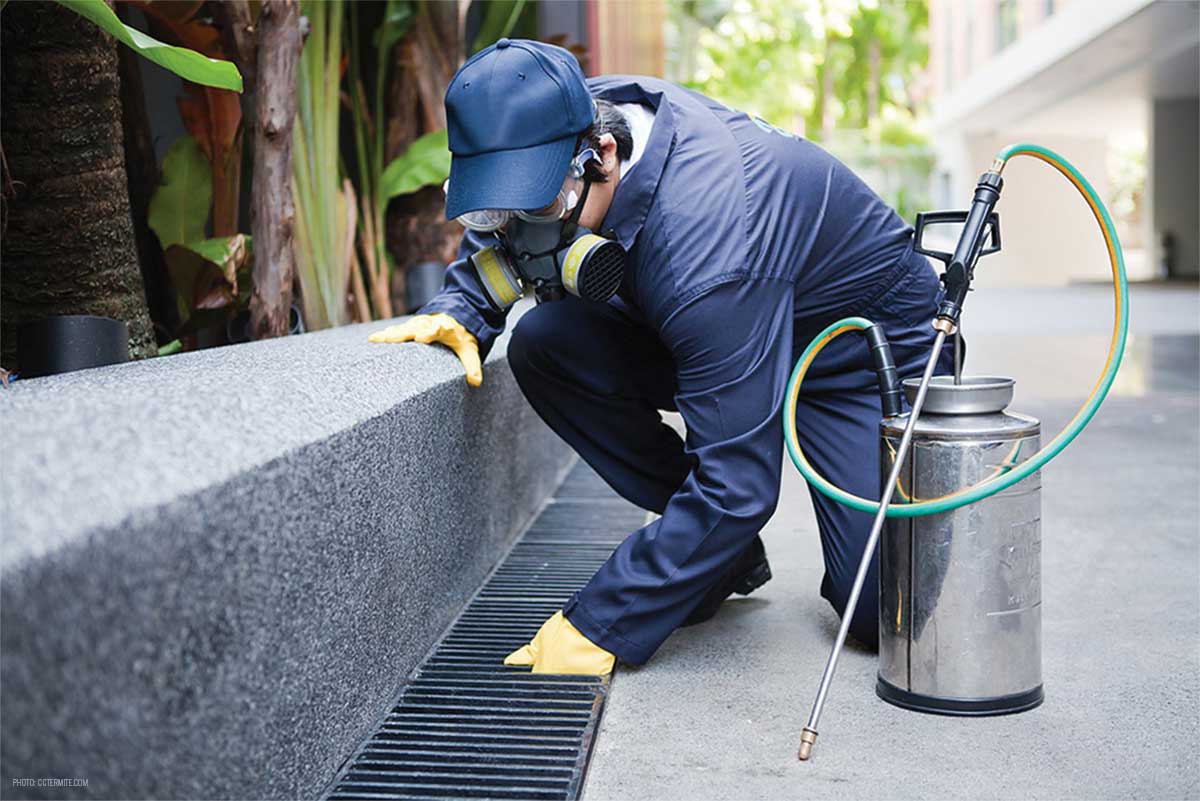Specialist Insect Control Techniques for Long-Term Results
In the world of bug control, attaining sustained efficacy and lasting outcomes needs a precise method that goes beyond plain extermination. Professional insect control strategies envelop an extensive approach that starts with a comprehensive inspection and assessment, followed by precise parasite recognition to recognize their actions patterns. The implementation of Integrated Insect Administration (IPM) concepts, paired with eco-conscious therapies, develops the cornerstone of sustainable parasite obliteration. However, real test depends on the recurring surveillance and upkeep of the treated areas, making certain a pest-free environment for the foreseeable future. By diving into the ins and outs of these techniques, a much deeper understanding of professional pest control approaches for sustaining outcomes arises.
Examination and Assessment
Upon entering a residential or commercial property for parasite control solutions, the first action is a complete examination and assessment to determine the level of the problem and determine the most effective treatment plan. Expert parasite control specialists are educated to diligently check out the premises, searching for indicators of pest task such as droppings, gnaw marks, nests, or any kind of architectural damages. They will certainly additionally analyze the problems that may be attracting bugs, such as food sources, water leakages, or entrance points.

Parasite Recognition and Actions

Moreover, recognizing the actions of the identified insect is vital to implementing effective control measures. Understanding where bugs nest, what they feed on, and their activity patterns can assist pest control experts devise methods to eradicate them successfully. Some parasites may be nocturnal, while others are much more active throughout the day. This expertise permits the application of therapies at ideal times for optimum efficiency.
Integrated Parasite Administration (IPM)
Integrated Pest Administration (IPM) techniques incorporate multiple techniques to regulate and protect against parasite infestations in a lasting and eco-friendly fashion. Exterminator DC. By incorporating methods such as organic control, environment manipulation, adjustment of social practices, and the usage of resistant ranges, IPM intends to minimize the use of chemical pesticides
Among the vital principles of IPM is the emphasis on avoidance. This proactive method entails monitoring insect populations regularly to discover any kind of potential concerns before they escalate. By determining parasite problems early, pest control actions can be implemented swiftly and effectively.
Moreover, IPM advertises the usage of non-toxic pest control methods whenever possible. This can include utilizing all-natural predators of the insects, presenting beneficial insects, or using pheromones to interrupt mating patterns. By minimizing reliance on chemical pesticides, IPM not only shields the environment yet additionally aids preserve an equilibrium in the environment.
Environmentally-Friendly Treatments
Applying eco-conscious methods in parasite control procedures can properly deal with invasions while focusing on environmental sustainability. Environmentally-friendly therapies concentrate on reducing the effect of parasite control methods on ecological communities, non-target organisms, and human health.
An additional key aspect of environmentally-friendly treatments is using organic and biodegradable items that damage down promptly without leaving hazardous deposits in the setting. Agricultural pesticides originated from plants like chrysanthemums or neem use effective bug control while presenting marginal danger to non-target varieties. Furthermore, employing techniques like warm treatments or pheromone catches can Your Domain Name target specific bugs with precision, decreasing the total ecological impact of bug control methods.
Continuous Monitoring and Upkeep
Consistent monitoring and upkeep are vital components of effective parasite control administration. Ongoing surveillance plays an important source essential role in ensuring that parasite problems are discovered early and taken care of without delay. Normal examinations by qualified specialists are essential to recognize any type of indications of pest activity, analyze the effectiveness of previous therapies, and make changes to the pest control strategy as needed. By checking parasite populaces with time, bug control experts can track fads, anticipate potential concerns, and execute preventative steps to reduce the danger of future problems.
Along with monitoring, upkeep practices are vital for lasting parasite control success. This includes carrying out proper sanitation actions to remove prospective food and water sources for insects, sealing access points to protect against parasites from going into the premises, and resolving any kind of structural issues that might assist in insect infestations (bed bug treatment). By integrating ongoing tracking and upkeep into an integrated bug administration method, organizations can make certain a pest-free setting and guard their home versus costly damages and health and wellness dangers
Final Thought
In final thought, making use of professional pest control strategies such as detailed evaluation and analysis, exact pest recognition and understanding of their behavior, integrated pest monitoring techniques, environmentally-friendly treatments, and ongoing surveillance and upkeep are necessary for achieving long-term results in bug control. By implementing these techniques, people can effectively take care of pest problems have a peek at these guys and keep a pest-free atmosphere in a sustainable manner.